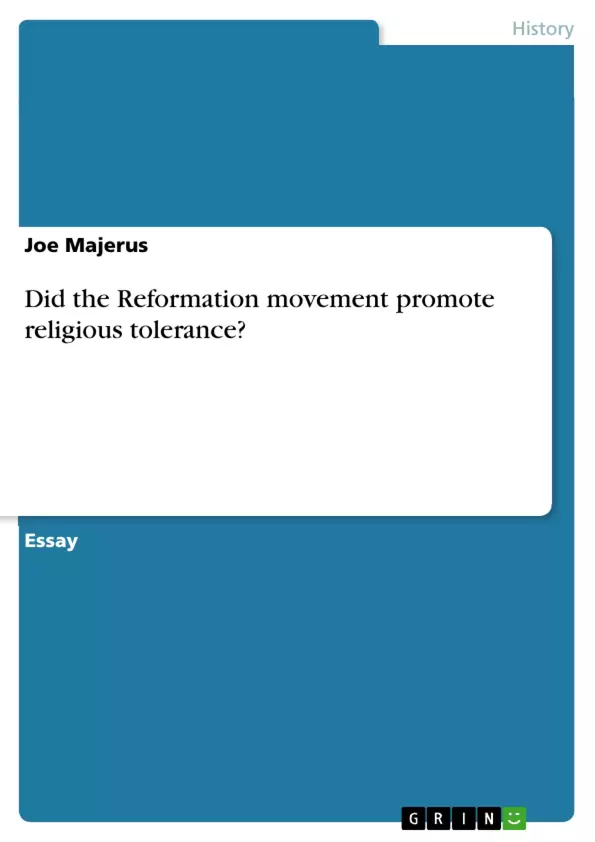A thorough and comprehensive interpretative analysis of the fundamental question as to what extent the early modern Reformation movements in central and western Europe contributed to the promotion of religious tolerance.
Inhaltsverzeichnis (Table of Contents)
- Did the Reformation movement promote religious tolerance?
Zielsetzung und Themenschwerpunkte (Objectives and Key Themes)
This essay examines the impact of the 16th century Reformation on religious tolerance in early Modern Europe. It explores the immediate and long-term religious and social implications of the movement.
- The Reformation's impact on religious tolerance.
- The role of religious intolerance within reformed denominations.
- The influence of political factors on religious tolerance.
- The impact of the Peace of Augsburg on religious freedom.
- The limits of religious freedom in the early modern period.
Zusammenfassung der Kapitel (Chapter Summaries)
The essay begins by examining the Peace of Augsburg of 1555 and its implications for religious freedom. It then explores the development of religious intolerance within reformed denominations, highlighting the persecution of Anabaptists and other dissenting groups. The essay further analyzes the role of political factors, such as the Schmalkaldic War and the Wars of Kappel, in shaping religious tolerance during this period. Finally, it discusses the limited impact of the Peace of Augsburg, which only extended to Lutherans and did not encompass Calvinists or other reformed Protestants.
Schlüsselwörter (Keywords)
This essay focuses on the Reformation, religious tolerance, religious intolerance, the Peace of Augsburg, the Schmalkaldic War, the Wars of Kappel, and early modern Europe.
- Citation du texte
- Joe Majerus (Auteur), 2011, Did the Reformation movement promote religious tolerance?, Munich, GRIN Verlag, https://www.grin.com/document/202313



